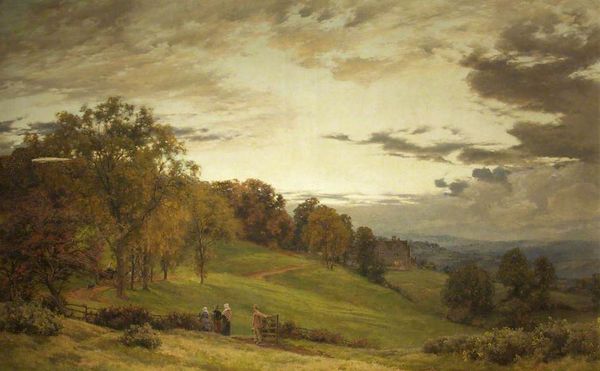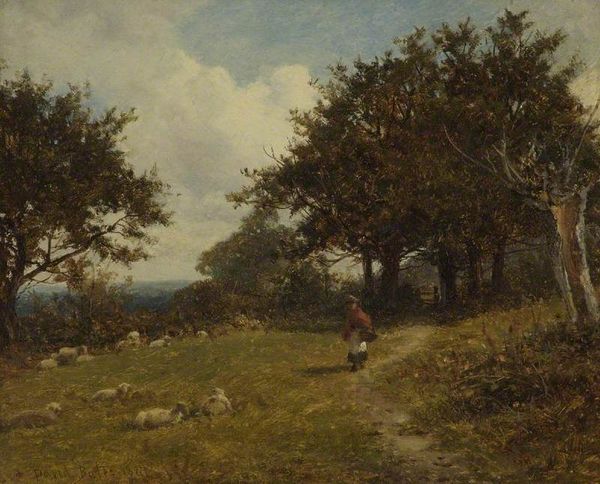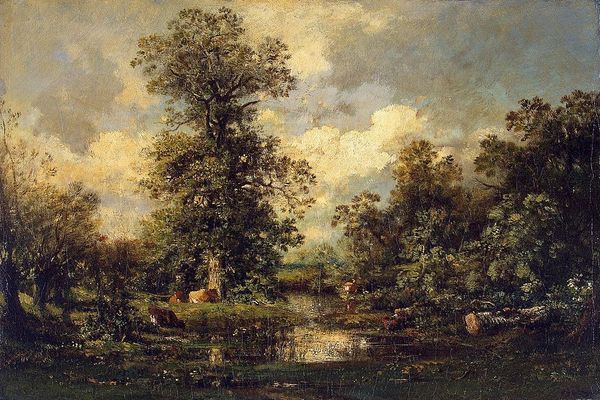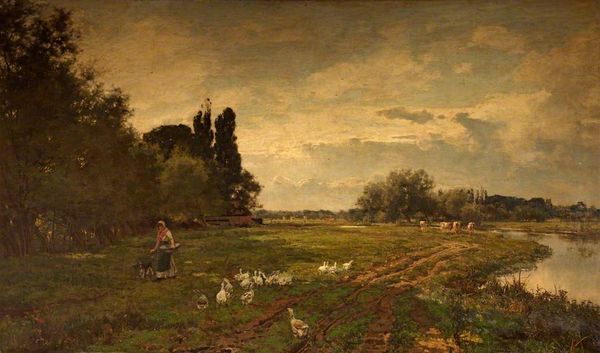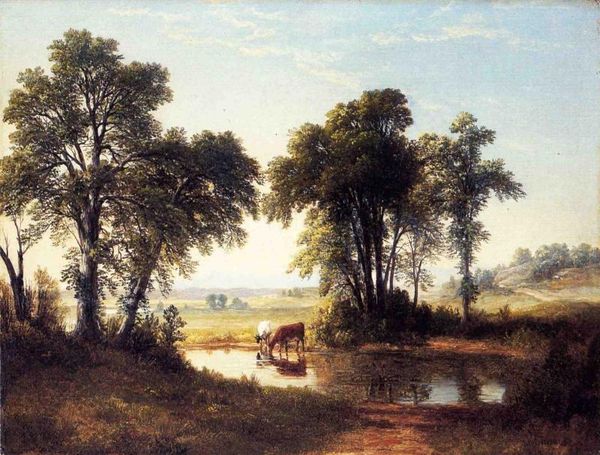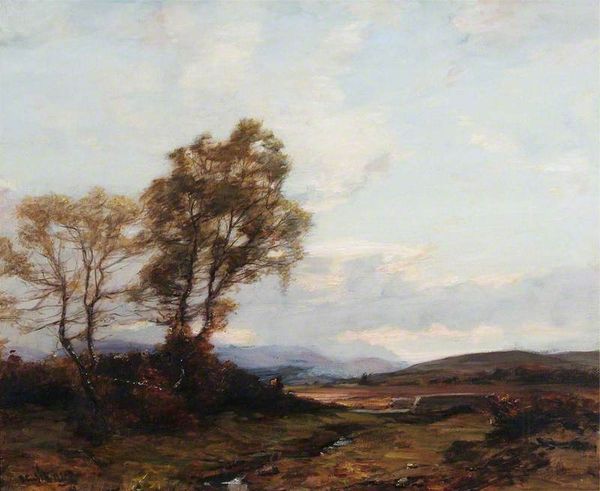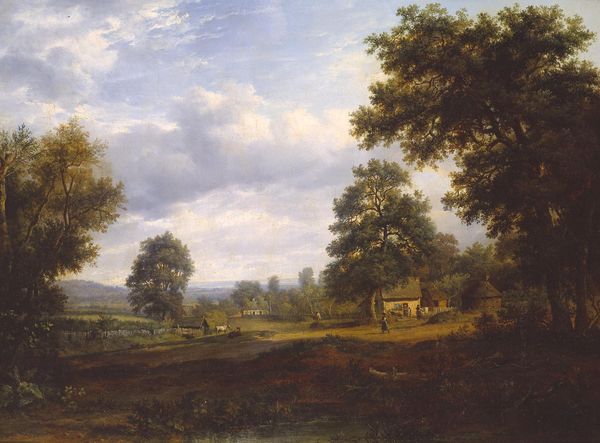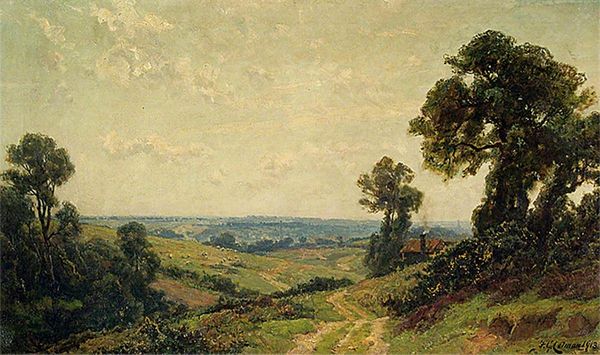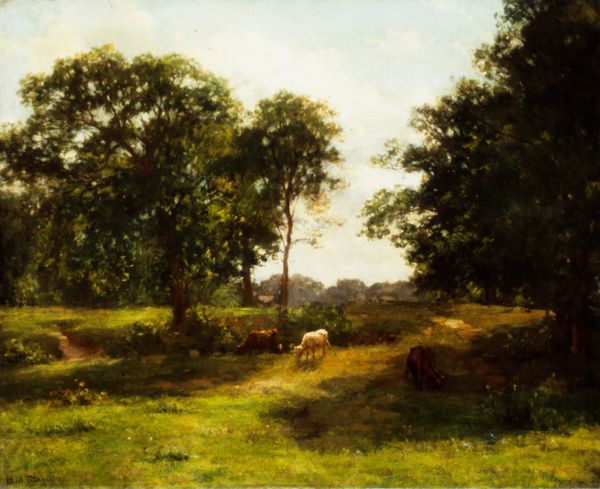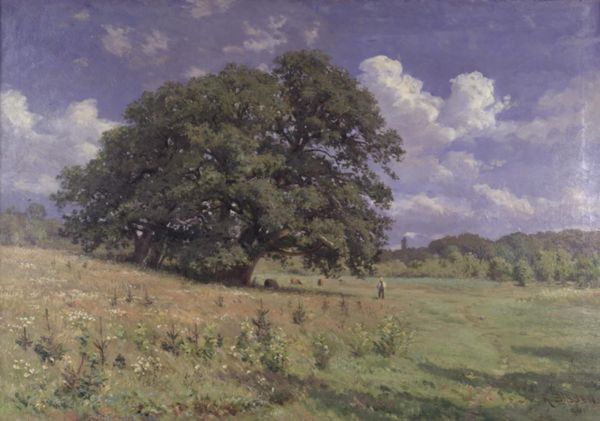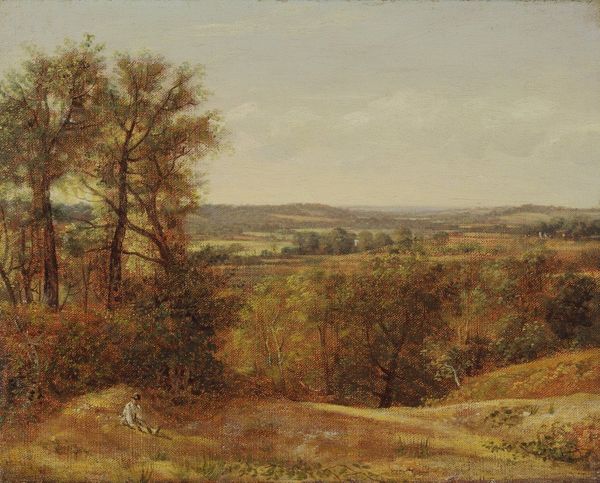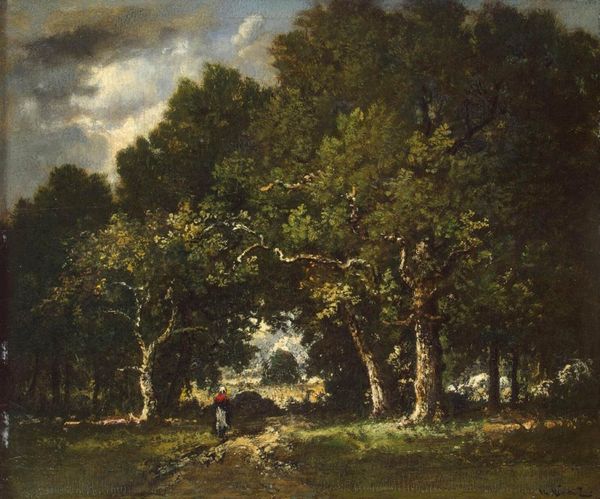
painting, plein-air, oil-paint
#
painting
#
plein-air
#
oil-paint
#
landscape
#
figuration
#
romanticism
Copyright: Public domain
Editor: Here we have an oil painting by David Bates called "On Ripple Common, Worcestershire". It depicts a vast, golden landscape, and it feels incredibly serene and idyllic. What do you see in this piece, and how do you think it speaks to a contemporary audience? Curator: Well, its very beauty is where we should begin, questioning its historical context. Romanticism in art often glossed over the realities of rural life. Consider who this idealized landscape excludes. Where are the working class, whose labor sustains this 'peaceful' scene? Are there hints of them present within the imagery? Editor: Now that you mention it, I see a horse-drawn cart with people far in the distance; but I didn’t initially interpret this as commentary on the working class. More like folks enjoying the view as well, haha. Curator: Exactly! Their presence can’t be denied, but note how their bodies almost become another object within nature itself. And where does it place the viewer when looking at this landscape; does it welcome us to admire this space, or passively enjoy watching this "peaceful labor?" Editor: That's a perspective I hadn't considered. It’s unsettling how easily the social realities can be overlooked for pretty scenery. It also appears that they are working in conditions dependent on nature’s whimsy, a commentary on our relation to labor and weather. Curator: Precisely. It’s crucial to look at art like this through an intersectional lens, considering the power dynamics and social narratives at play. Art doesn’t exist in a vacuum, and even landscapes reflect socio-political conditions of its time. Editor: Thank you, that’s made me completely rethink how I view seemingly harmless landscapes now. Curator: And hopefully, it will prompt you to question and contextualize other seemingly innocent works, too.
Comments
No comments
Be the first to comment and join the conversation on the ultimate creative platform.
